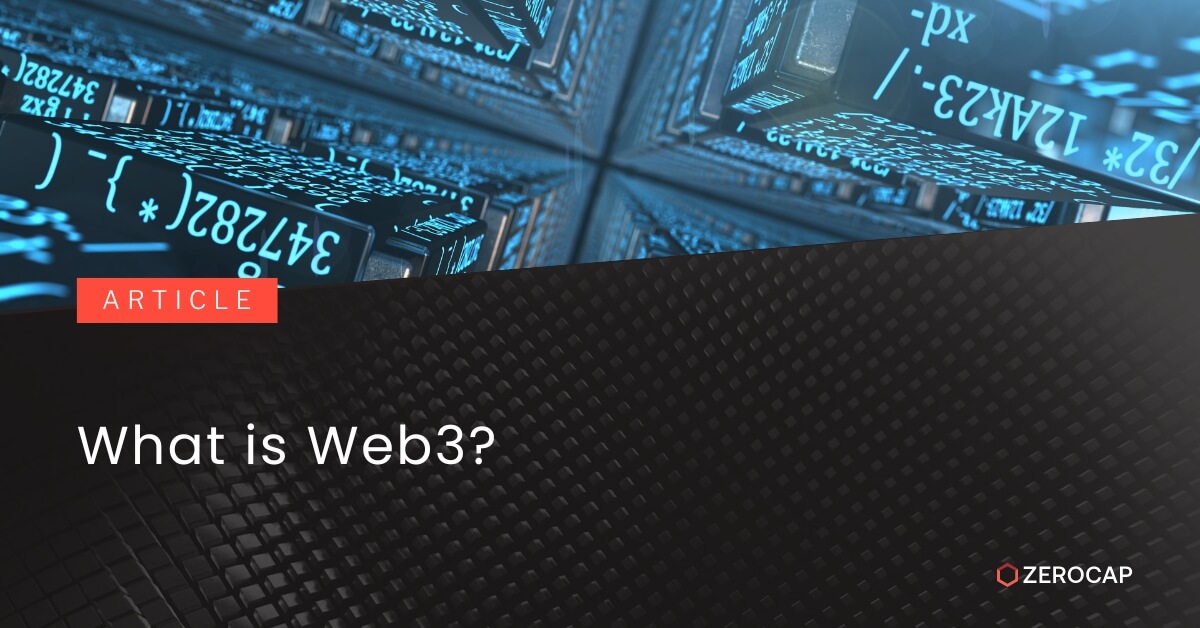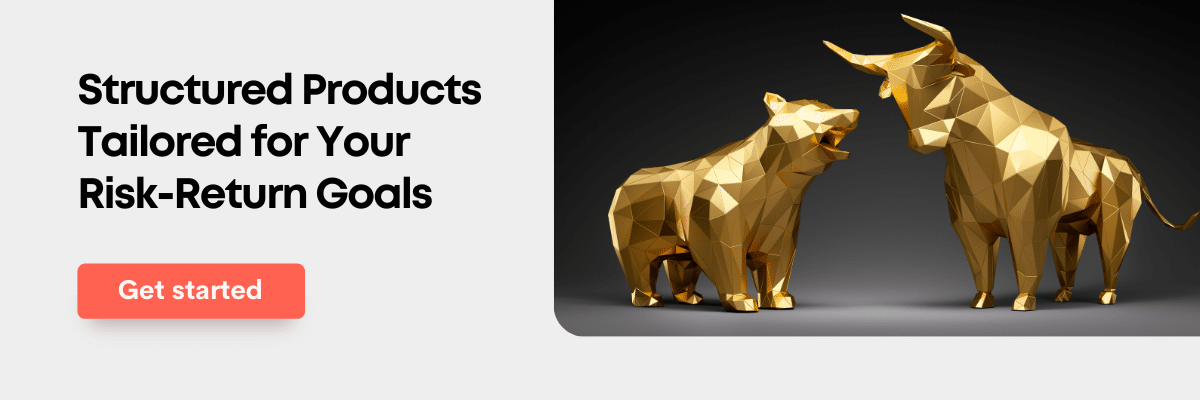Content
- Potential & Opportunities of Web3
- Bringing Web3 to Life — Examples in Practice
- Streamlining Financial Services (DeFi)
- DAOs
- Powering the Creator Economy
- Transforming Cloud Storage (Data Control)
- The Metaverse
- NFTs
- Powering Gaming Applications
- Securing Social Media
- Challenges of Web3 That Still Need to Be Addressed
- Scalability
- Greenifying Web3
- Security Vulnerabilities
- Poor UI/UX Design
- Imagining the endgame
- About Zerocap
- FAQs
- What is Web3 and how does it differ from Web1 and Web2?
- What are some potential applications of Web3?
- What are some challenges that Web3 faces?
- What is the endgame for crypto Web3 development?
- What is Zerocap?
25 Feb, 23
What is Web3?

- Potential & Opportunities of Web3
- Bringing Web3 to Life — Examples in Practice
- Streamlining Financial Services (DeFi)
- DAOs
- Powering the Creator Economy
- Transforming Cloud Storage (Data Control)
- The Metaverse
- NFTs
- Powering Gaming Applications
- Securing Social Media
- Challenges of Web3 That Still Need to Be Addressed
- Scalability
- Greenifying Web3
- Security Vulnerabilities
- Poor UI/UX Design
- Imagining the endgame
- About Zerocap
- FAQs
- What is Web3 and how does it differ from Web1 and Web2?
- What are some potential applications of Web3?
- What are some challenges that Web3 faces?
- What is the endgame for crypto Web3 development?
- What is Zerocap?
Web3 is the next wave of the internet, bringing a new level of decentralisation that connects users to the online world in a way never before seen. This recent innovation is the third phase of development on the World Wide Web, after Web1 and Web2.
Web1 only allowed people to access the internet in a read-only capacity. Web2 brought with it interactivity and social media, whereby those who publish the content do not own or control the technology behind it.
Instead, larger corporations and businesses have been able to exploit the potential of Web2 technologies, leading to increased centralisation and privacy concerns. Social media platforms, for example, can track user behaviour and profit from it without any direct incentive for the users themselves.
Now, Web3 brings a new era of decentralised technology that is set to revolutionise how people interact with each other online. The concept relies on distributed ledger technology such as blockchain and promises to return control to the hands of users.

Web3 gives users full ownership over their data — the users no longer have to depend on third parties who may be incentivised not to protect user information. Additionally, users can benefit directly or through rewards from peer-to-peer networks.
Furthermore, Web3 promotes the development of a wide range of decentralised applications (dApps). These applications are meant to offer more secure and efficient services for users, including but not limited to finance, healthcare, supply chain, and education.
Potential & Opportunities of Web3
The revolution of web3 is still underway, but from what has already been seen, there is huge potential for the technology to break down existing barriers between users and institutions.
Web3 brings transparency and trust and is expected to increase user data and asset security. Moreover, with blockchain-based protocols, developers can create immutable digital contracts accessible to all parties involved in a transaction.
This idea eliminates any third parties who would otherwise be necessary to facilitate this process.
Bringing Web3 to Life — Examples in Practice
Many companies across different industries have already implemented Web3 and are looking to take advantage of this development’s full potential. Discover some projects that shed light on the possibilities for Web3 below.
Streamlining Financial Services (DeFi)
Decentralised finance (DeFi) has been one of the most popular applications of Web3, allowing users to access financial services without relying on third parties.
With blockchain-based protocols, DeFi projects provide access to services such as borrowing, lending, and trading through decentralised exchanges, which provides an alternative to traditional banking methods while increasing security and efficiency for all involved.
DAOs
Decentralised autonomous organisations (DAOs) allow members from across the globe to collaborate on projects without being hindered by physical or jurisdictional boundaries. In addition, the ability of these organisations to be self-governed means that decision-making processes are more efficient, and there is an increased level of trust amongst members.
Powering the Creator Economy
Web3 has opened up opportunities for creators to monetise their work while maintaining control over their intellectual property.
Smart contracts built on blockchain allow creators to license their products securely and set customer terms. In addition, this digital asset management system provides a platform through which users can connect directly with one another and transact in a more secure environment.
Transforming Cloud Storage (Data Control)
Using decentralised cloud storage powered by Web3 technology offers an alternative to traditional cloud storage providers.
Decentralised cloud storage platforms allow users to store their data on nodes across the globe, ensuring that it remains secure and private. This feature gives users more control over their data — no third parties are necessary for users to access the content they need.
The Metaverse
The metaverse is an open-world platform powered by Web3 technology, which allows anyone to create a virtual environment. This opens up opportunities for developers and game designers to build immersive 3D experiences without relying on centralised entities.
In addition, the ability to customise environments and develop new interactive features gives creative freedom to those looking to explore this space further.
NFTs
Non-fungible tokens (NFTs) allow users to own digital assets such as artwork and music securely. Blockchain-based protocols make NFTs unique and indivisible, allowing users to buy and sell digital assets without relying on a central authority.
They also provide an immutable record of ownership, ensuring that all transactions are securely recorded and auditable by anyone involved in the process.
Powering Gaming Applications
Web3 lets developers create sophisticated gaming experiences without a centralised server. This development brings opportunities to build new games with interactive features such as virtual economies or tournaments — all powered by smart contracts and distributed ledger technology (DLT).
As well as creating more engaging gaming experiences, this eliminates any need for third parties who would otherwise be responsible for authentication and payments.
Securing Social Media
Web3 has enabled the development of social media platforms that are more secure and private than existing solutions. For example, platforms such as EthSocial allow users to control their data, eliminating any need for third-party involvement for users to access or share content.
Challenges of Web3 That Still Need to Be Addressed
Although Web3 has enabled many exciting opportunities for developers and users alike, the development still comes with some challenges that need to be addressed.
Scalability
Web3 still needs improvements in the speed and efficiency of transactions on the platform to ensure that they remain secure and accessible to many users.
Greenifying Web3
The energy consumption associated with running complex blockchain networks can be very high — this needs to be addressed to make Web3 an environmentally friendly technology.
However, there has been a lot of effort to reduce energy consumption by Web3 while retaining the usability of this technology. For example, Ethereum recently switched to a “Proof-of-Stake” consensus algorithm, which is far more energy efficient than its predecessor.
Security Vulnerabilities
Web3 is still relatively new, and some underlying security vulnerabilities are yet to be identified. Therefore, developers should keep up with research to help come up with robust security solutions for Web3 and build trust among users who wish to entrust the platform with their data.
Poor UI/UX Design
Web2 thrives on attractive designs and intuitive user interfaces. Many current blockchain-based apps lack the user experience (UX) that people have come to expect when they use the internet. It remains to be seen whether those without technical knowledge will adopt Web3 unless interfaces improve.
Imagining the endgame
The ideal for Web3 development is certainly attractive. People will be able to manage their own data in the Web3 environment and use a single personalised account to navigate between social media, email, entertainment, and shopping, producing a record of all of that activity on the blockchain without compromising anonymity.
The driving philosophy is that rather than giving our data to tech companies, each user will be the owner of their own data and use it to personalise their experience instead of for example giving it away to companies that will send them targeted ads and unwanted emails.
In Web3, the information about preferences, dislikes, hobbies, and buying habits can be tokenised, and if users so choose, they will be able to exchange those tokens for decision-making power. In other words, users can profit from their internet activity instead of being passive participants powerless to control who harvests their data.
The potential of Web3 is limitless, and its development could eventually transform how individuals interact with digital services. For example, in the future, you may see an internet of value, where anyone can send or receive payments at any time from anywhere in the world without relying on any third-party service.
It’s clear that there are still some challenges to be addressed, but the potential of this new kind of web is incredibly exciting. With the right support from developers and users, the future of Web3 could be incredibly bright.
About Zerocap
Zerocap provides digital asset investment and digital asset custodial services to forward-thinking investors and institutions globally. For frictionless access to digital assets with industry-leading security, contact our team at [email protected] or visit our website www.zerocap.com
This material is intended for illustrative purposes and general information only. It does not constitute financial advice nor does it take into account your investment objectives, financial situation or particular needs. You should consider the information in light of your objectives, financial situation and needs before making any decision about whether to acquire or dispose of any digital asset. Investments in digital assets can be risky and you may lose your investment. Past performance is no indication of future performance. Zerocap Pty Ltd carries out regulated and unregulated activities. Spot crypto-asset services and products offered by Zerocap are not regulated by ASIC. Zerocap Pty Ltd is registered with AUSTRAC as a DCE (digital currency exchange) service provider (DCE100635539-001). Regulated services and products include structured products (derivatives) and funds (managed investment schemes) are available to Wholesale Clients only as per Sections 761GA and 708(10) of the Corporations Act 2001 (Cth) (Sophisticated/Wholesale Client). To serve these products, Zerocap Pty Ltd is a Corporate Authorised Representative (CAR: 001289130) of AFSL 340799)
FAQs
What is Web3 and how does it differ from Web1 and Web2?
Web3 is the third phase of development on the World Wide Web, following Web1 and Web2. While Web1 allowed people to access the internet in a read-only capacity and Web2 introduced interactivity and social media, Web3 brings a new level of decentralisation. It relies on distributed ledger technology such as blockchain and gives users full ownership over their data, eliminating dependence on third parties. Web3 also promotes the development of decentralised applications (dApps) offering more secure and efficient services.
What are some potential applications of Web3?
Web3 has a wide range of potential applications across various sectors. In finance, decentralised finance (DeFi) projects provide access to services such as borrowing, lending, and trading through decentralised exchanges. Decentralised autonomous organisations (DAOs) allow global collaboration on projects. Web3 also powers the creator economy, allowing creators to monetise their work while maintaining control over their intellectual property. Other applications include transforming cloud storage, powering gaming applications, and enabling the development of social media platforms that are more secure and private.
What are some challenges that Web3 faces?
Despite its potential, Web3 faces several challenges. These include scalability issues, high energy consumption, security vulnerabilities, and poor user interface/user experience design. However, efforts are being made to address these issues, such as Ethereum’s switch to a more energy-efficient “Proof-of-Stake” consensus algorithm.
What is the endgame for crypto Web3 development?
The ideal for Web3 development is a personalised internet experience where users own their data and use it to personalise their experience, rather than giving it away to tech companies. Users could profit from their internet activity instead of being passive participants. The potential of Web3 is limitless, and its development could transform how individuals interact with digital services.
What is Zerocap?
Zerocap provides digital asset investment and digital asset custodial services to forward-thinking investors and institutions globally. It offers frictionless access to digital assets with industry-leading security.
Like this article? Share
Latest Insights
Interview with Ausbiz: How Trump’s Potential Presidency Could Shape the Crypto Market
Read more in a recent interview with Jon de Wet, CIO of Zerocap, on Ausbiz TV. 23 July 2024: The crypto market has always been
Weekly Crypto Market Wrap, 22nd July 2024
Download the PDF Zerocap is a market-leading digital asset firm, providing trading, liquidity and custody to forward-thinking institutions and investors globally. To learn more, contact
What are Crypto OTC Desks and Why Should I Use One?
Cryptocurrencies have gained massive popularity over the past decade, attracting individual and institutional investors, leading to the emergence of various trading platforms and services, including
Receive Our Insights
Subscribe to receive our publications in newsletter format — the best way to stay informed about crypto asset market trends and topics.



 Share
Share  Tweet
Tweet  Post
Post 